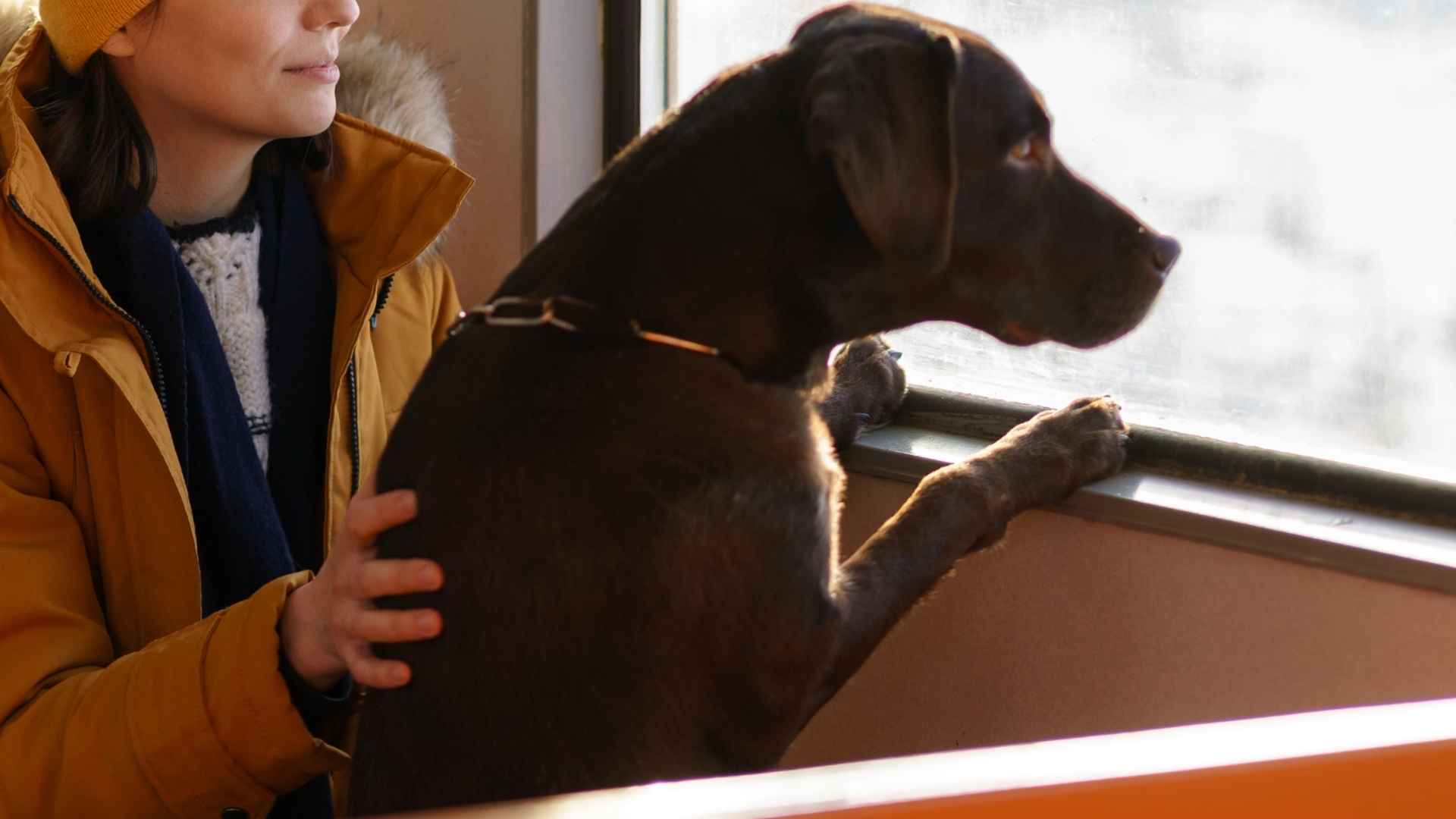For dog lovers who rarely stay in one place, finding the right four-legged travel buddy is just as important as planning the next adventure. But not all pups are suited for the quirks of rural bus rides—the crowded aisles, sudden stops, and ever-changing scenery can be overwhelming for many breeds. That’s why choosing a dog with the right temperament and size is key to making every journey enjoyable for both you and your canine companion.
Certain breeds naturally excel at life on the move. They’re small enough to perch comfortably on your lap or curl up in a carrier, yet sturdy enough to handle the bustle of public transport without stress. These adaptable dogs thrive in varied settings, from quiet country lanes to lively town centers, and bring a comforting sense of companionship wherever the road leads.
Whether you’re commuting to a remote village, hopping between market towns, or simply craving a countryside getaway, the right dog can transform every bus trip into an adventure. Below, we explore the breeds that not only tolerate rural bus travel but truly enjoy the ride.
Dog Breeds That Enjoy Traveling On Rural Buses
1. Chihuahua
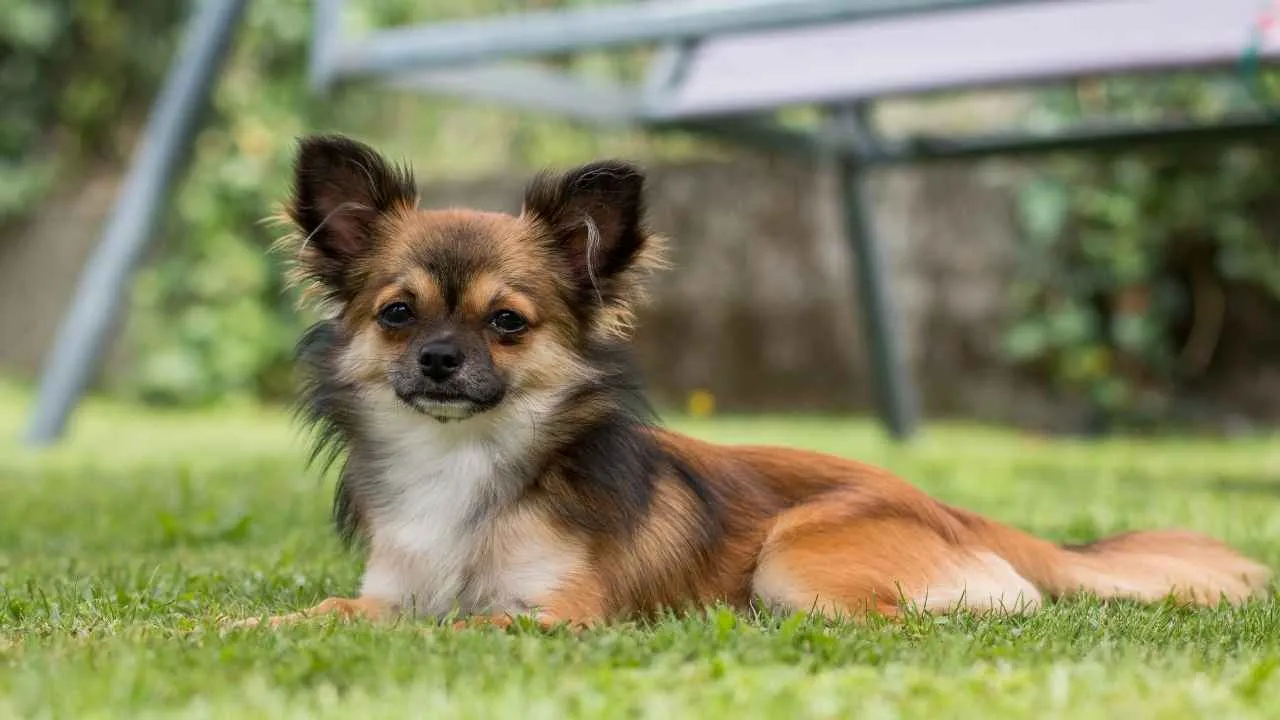
Known as the world’s tiniest dog breed, the Chihuahua—sometimes affectionately called “Chi” or “Chi-Chi”—packs a big personality into a tiny frame. The AKC describes the Chihuahua as charming, graceful, and sassy.
Standing just 5–8 inches tall and rarely exceeding 6 pounds, these pint-sized companions have a history stretching back to ancient Mexico, where they were treasured by the Toltec and Aztec civilizations.
With their signature “apple” head, luminous eyes, and large upright ears, Chihuahuas are instantly recognizable and adored by city dwellers and travelers alike. Their compact size makes them perfect for slipping into carriers or even perching on your lap during long rural bus journeys.
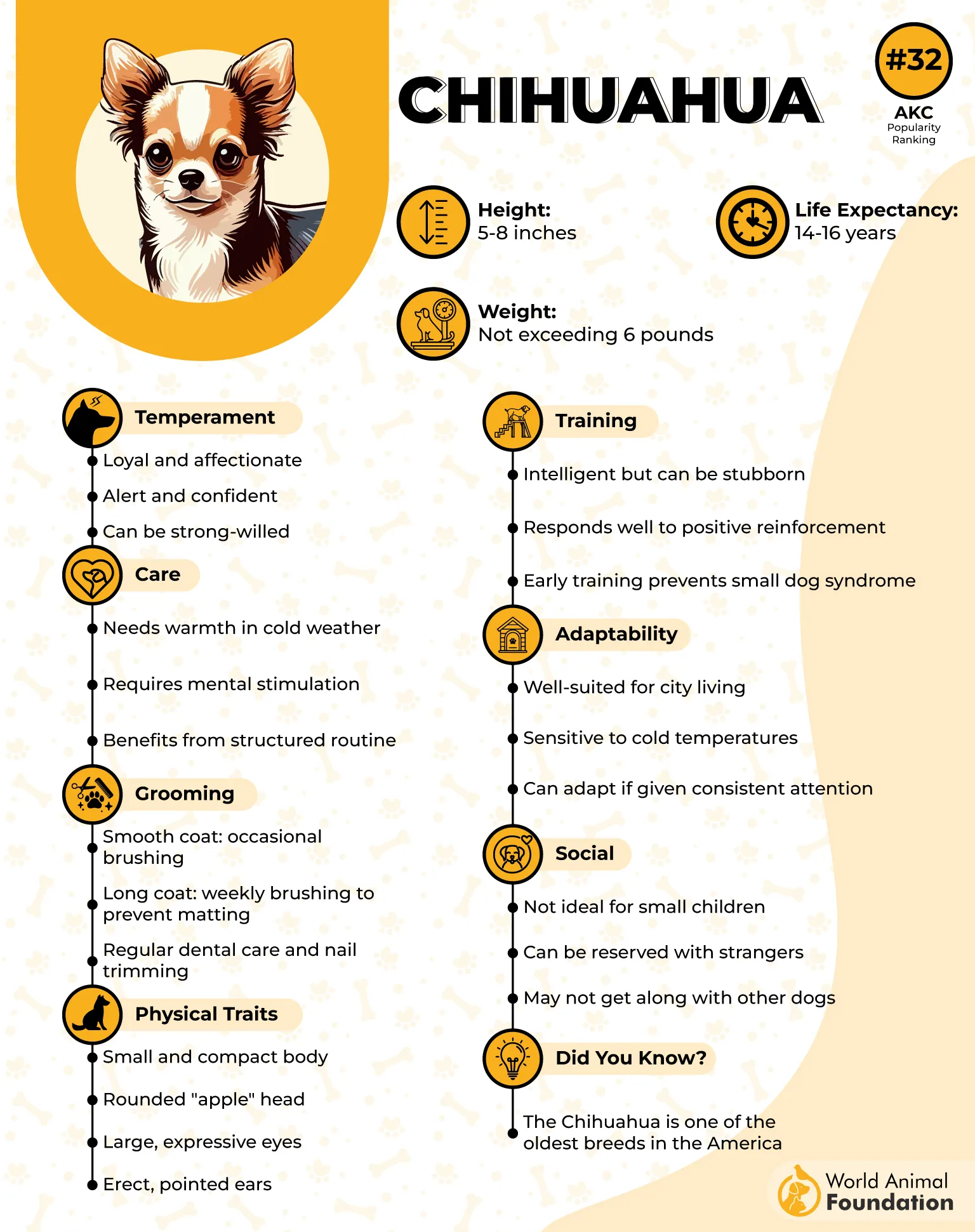
Care Needs
Though small, Chihuahuas come with spirited energy that demands regular activity. Short walks and indoor play keep them happy and healthy, but they also thrive on socialization to prevent nervousness or excessive barking.
Grooming is simple—short-haired Chihuahuas need only light brushing, while long-haired varieties benefit from more frequent care. Dental health is crucial, as these little dogs are prone to tooth issues, so daily brushing is strongly recommended. Their tiny frames also mean they’re sensitive to cold, so a cozy sweater on chilly bus rides is a must.
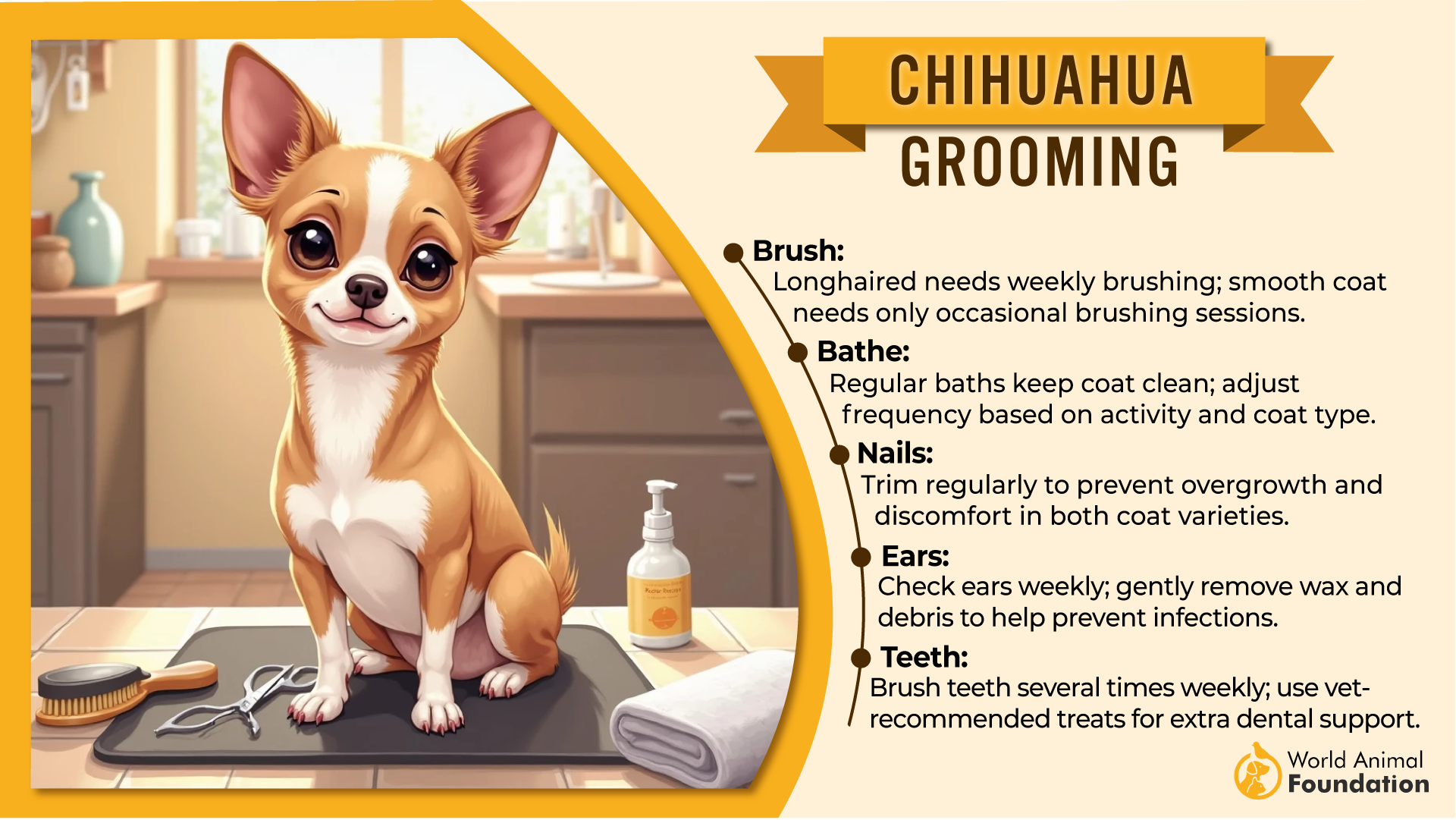
Fun Fact: Despite their petite size, Chihuahuas are among the oldest dog breeds in the Americas, with roots tracing back more than a thousand years.
2. Cavalier King Charles Spaniel
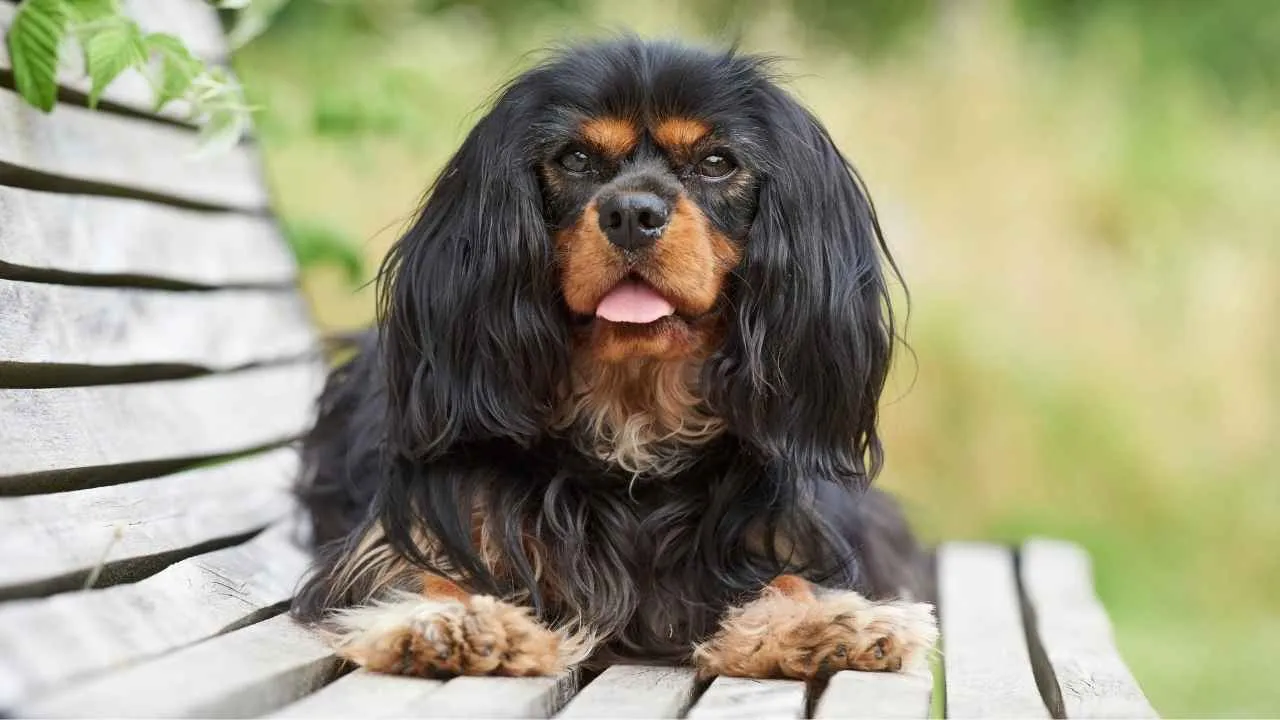
The Cavalier King Charles Spaniel, sometimes affectionately called the “Cavalier” or “Cav,” is a charming blend of royal elegance and playful spirit. Britannica says the Cavalier King Charles Spaniel is an extremely popular breed because of its sweet, gentle, and loving nature.
Originating in England, this toy group breed stands 12 to 13 inches tall and weighs around 13 to 18 pounds, making it a perfect size for bus trips and laps alike. Its silky, feathered coat comes in four classic varieties—Blenheim, tricolor, ruby, and black-and-tan—and pairs with a sweet, expressive face and gentle demeanor.
With a lifespan of 12 to 14 years, these spaniels are as enduring in companionship as they are graceful, thriving as both cuddle-ready lap dogs and energetic explorers.
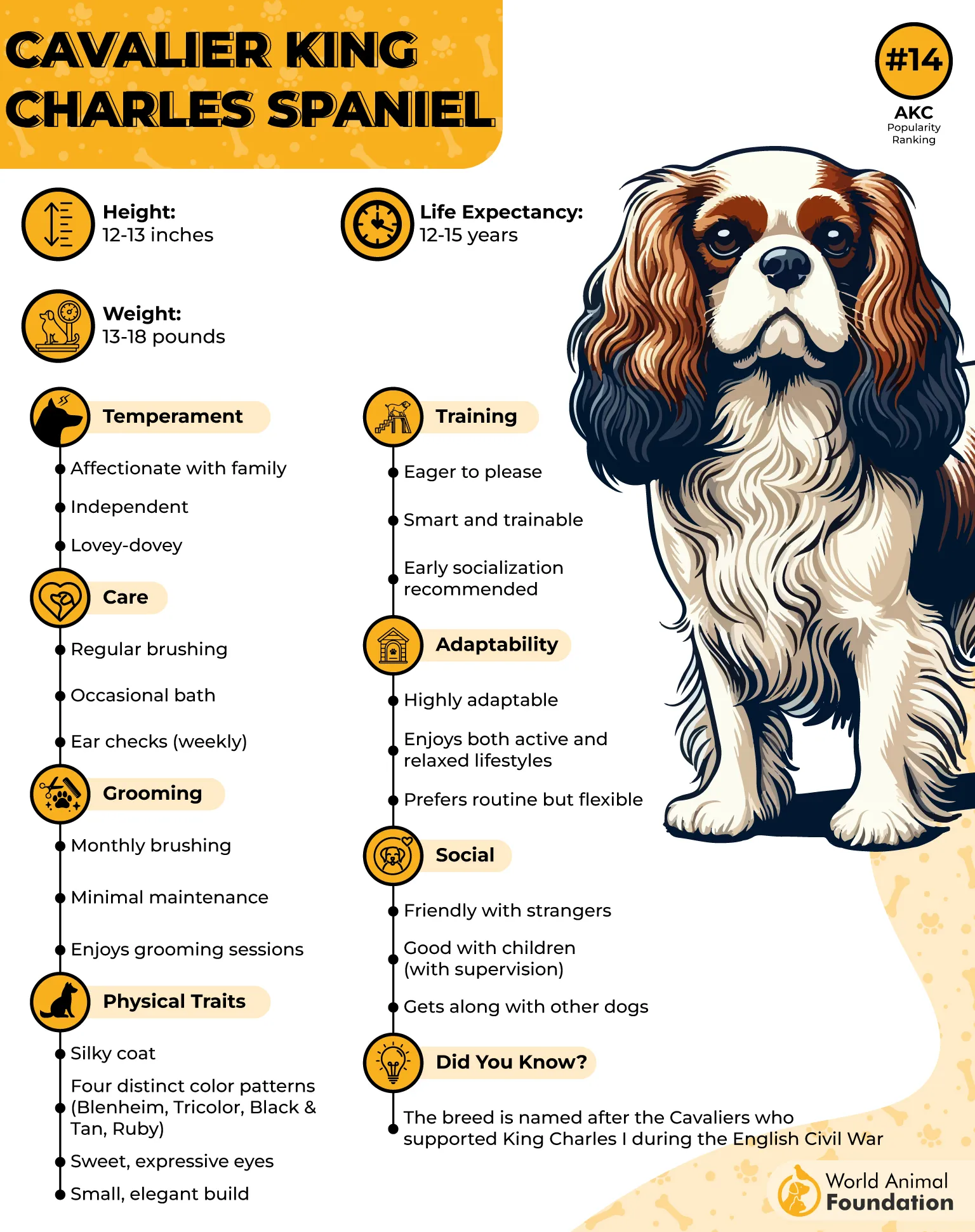
Care Needs
Cavaliers are generally easygoing travelers, but their comfort requires a bit of preparation. Their long, silky coat needs regular brushing to prevent tangles, especially after outdoor excursions.
They thrive on companionship and shouldn’t be left alone for long periods, which makes them perfect for bus journeys alongside their people.
While they adapt well to different environments, owners should bring essentials like water, a small brush, and a cozy blanket for longer rides. Regular vet checkups are key, as Cavaliers can be prone to heart issues that need monitoring.
Fun Fact: Cavaliers are such people-magnets that bus trips often turn into social events—they simply can’t resist saying hello to every passenger they meet!
3. French Bulldog
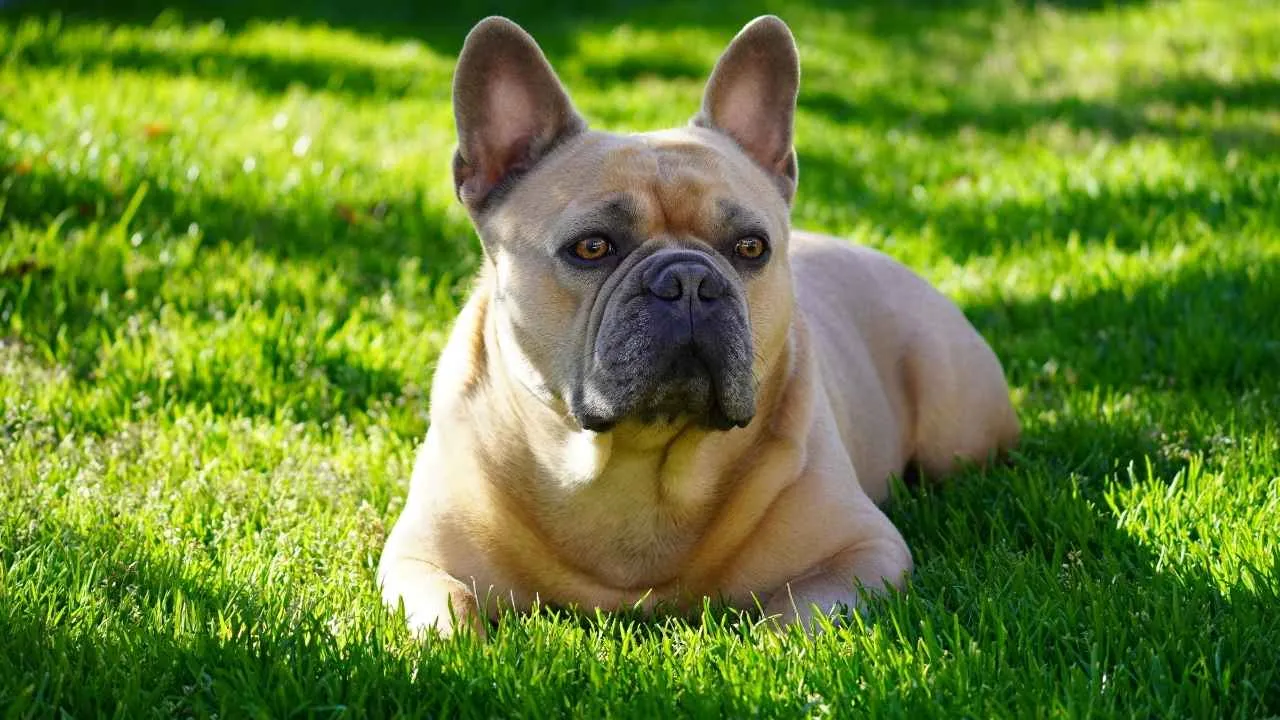
The French Bulldog—affectionately called the “Frenchie”—is one of the most adored small dog breeds worldwide. Originating in 19th-century France, these dogs were bred as charming companions for lace workers and city dwellers.
Standing only 11–13 inches tall and weighing under 28 pounds, they boast a compact, muscular body, a short muzzle, and their signature bat-like ears. PetMD says French bulldogs are easygoing, happy little dogs that make loving companions.
Their affectionate nature and playful spirit make them excellent travel buddies for rural bus rides, where their calm demeanor keeps stress levels low for everyone onboard.

Care Needs
Despite their sturdy frame, French Bulldogs require attentive care. Their flat face makes them prone to overheating, so they need to stay cool in warm weather and should avoid long exposure to heat on crowded buses.
The distinctive facial folds must be cleaned regularly to prevent irritation, and they should never be left unattended near water. Frenchies are notoriously poor swimmers. Moderate exercise suits them best; a few short strolls and plenty of indoor companionship keep them happy and healthy.
Fun fact: Despite their “frowny” face, Frenchies are famously cheerful and adaptable—traits that make them natural-born travel companions.
4. Maltese
The Maltese, often called the “Ye Ancient Dogge of Malta,” is one of the oldest toy breeds, with roots tracing back to ancient civilizations. Statues resembling these elegant dogs were found in the tomb of Pharaoh Ramses II, and ancient art later depicted them under the name “Melitae.”
Weighing under 7 pounds and standing about 7–9 inches tall, this lively companion boasts a striking, silky white coat and a bright, expressive face with large, dark eyes. The Maltese is part of the Toy Group, renowned for its charm, adaptability, and long lifespan of 12–15 years.
Care Needs
Despite their dainty size, Maltese dogs require daily attention to stay happy and healthy. Their long, flowing coat demands frequent brushing to prevent tangles, or many owners opt for a shorter “puppy cut” for easier upkeep during travel.
These affectionate dogs crave companionship, daily play, and gentle exercise, making short bus rides or strolls ideal for keeping them engaged. Training and socialization from an early age help manage their occasional stubborn streak, ensuring they remain polite travel companions.
Fun Fact: Archaeologists discovered statues of Maltese-like dogs in Ramses II’s tomb—proof of this breed’s centuries-long status as a cherished companion.
5. Pomeranian
Known as the “little dog with a big personality,” the Pomeranian (also called the Pom or Zwergspitz) has long charmed royalty and commoners alike. Originating from the larger sled-pulling Spitz breeds of the Arctic, it was refined into its modern toy size in 18th-century Europe, most famously popularized by Queen Victoria.
Standing only 6–7 inches tall and weighing no more than 7 pounds, this spirited breed boasts a luxuriously thick double coat and a foxy, smiling face that turns heads on every outing. Despite their tiny stature, Pomeranians often behave like fearless watchdogs, barking to announce strangers and confidently interacting with dogs much larger than themselves.
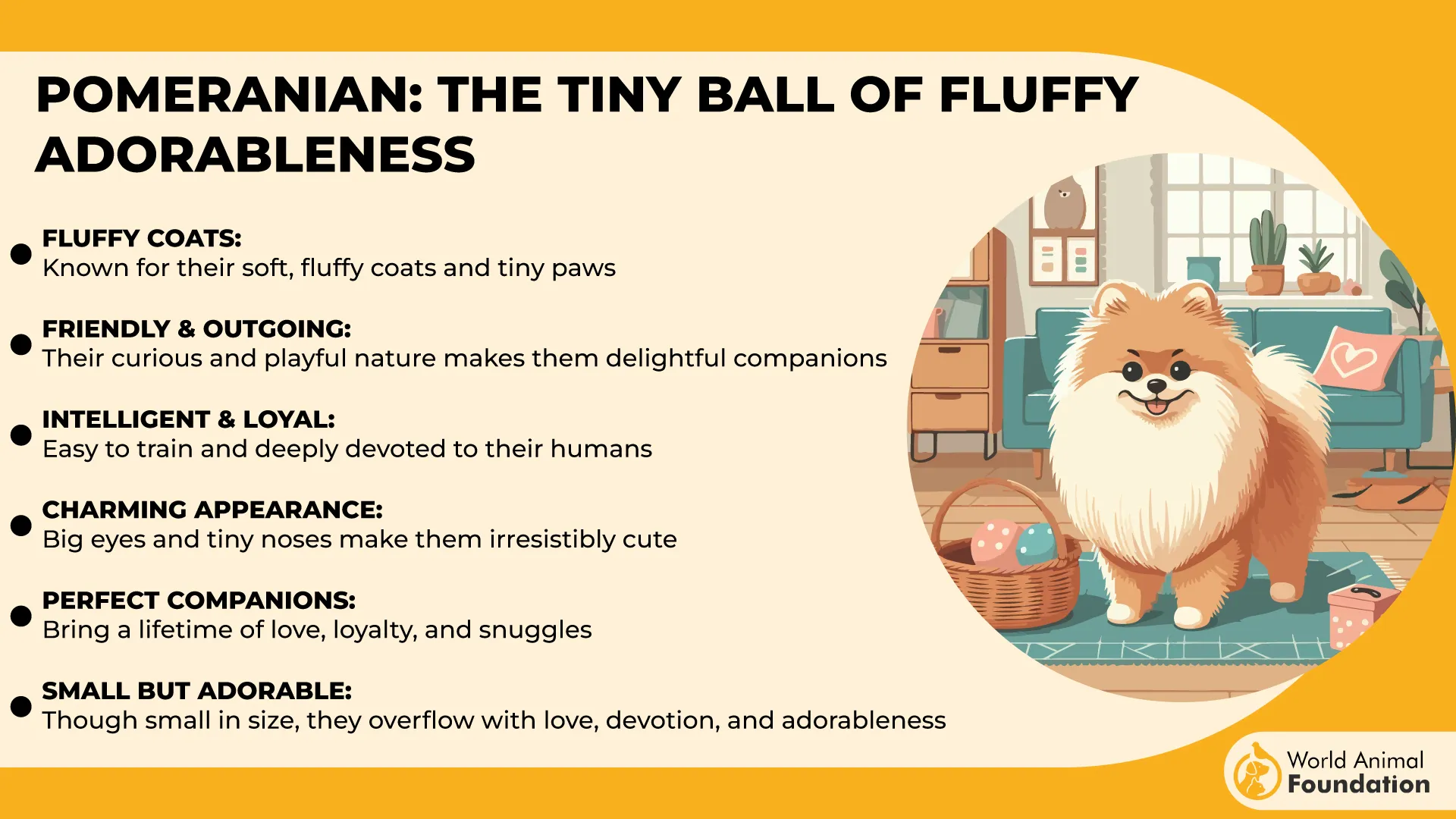
Care Needs
Pomeranians thrive when they’re deeply bonded with their humans and dislike being left alone for long periods, so early training to handle short separations is essential.
Their iconic coat demands consistent upkeep—brushing several times a week to prevent matting and regular trims to keep them comfortable in all seasons.
Dental care is critical too, as Poms are prone to tooth issues; brushing their teeth at least three times weekly is recommended. Moderate exercise, such as brief walks or playful indoor sessions, keeps them fit without overexertion.
Did you know? Queen Victoria’s beloved Pomeranian, Marco, is credited with sparking the global craze for this pint-sized yet commanding breed.
6. Boston Terrier
Known affectionately as the “American Gentleman,” the Boston Terrier is an endearing little dog with a striking tuxedo-like coat and a personality as bright as its big, round eyes.
Developed in the late 1800s in Boston, this compact companion stands around 15–17 inches tall and typically weighs under 25 pounds, making it an ideal size for lap sitting or nestling in a bus carrier.
Recognized in the Non-Sporting Group, Boston Terriers are sturdy yet portable, with a jaunty stride and an ever-curious nature—perfect traits for life on the road or a countryside commute.
Care Needs
Because Boston Terriers are brachycephalic (flat-faced), they can struggle with breathing in hot weather or during intense activity. Rural bus trips should be planned with their comfort in mind—avoid midday heat and provide breaks for fresh air.
Short, gentle walks and calm environments help prevent them from overheating. Their short coat requires only minimal grooming, though occasional baths and ear checks are essential for overall health.
Fun Fact: Boston Terriers were among the first non-sporting breeds developed in the United States, earning their “American Gentleman” nickname for their refined look and sweet manners.
7. Yorkshire Terrier
The Yorkshire Terrier—affectionately called the Yorkie—is a spirited toy breed with roots in 19th-century England, where it was bred to hunt rats in mills and mines. Today, it’s celebrated as a stylish companion, with its fine, floor-length coat of steel blue and golden tan making it instantly recognizable.
Weighing no more than 7 pounds and standing around 7–8 inches tall, the Yorkie is a portable breed that thrives in bustling cities and countryside alike.
Their lively personality, loyalty, and confidence make them a favorite for owners who love to travel, especially on rural bus rides where their small size and big charm fit right in.
Care Needs
Yorkies require regular grooming—their silky coats tangle easily and benefit from frequent brushing and trimming to stay neat and comfortable. Because they’re sensitive to cold, a warm sweater or jacket is essential for chilly bus journeys or brisk country air.
Though tiny, they need daily walks and mental stimulation to stay happy, and their strong attachment to their people means they shouldn’t be left alone for long stretches.
Fun fact: Despite their glamorous looks, Yorkies were once fierce rat catchers in England’s textile mills!
8. Beagle
The Beagle, often affectionately called the “merry hound,” is one of the most beloved breeds in the hound group. Known for its cheerful nature and soulful brown or hazel eyes, the Beagle has a history rooted in pack hunting, which explains its social and friendly demeanor.
Standing under 13 inches or between 13 and 15 inches at the shoulder, and weighing between 20 and 30 pounds, this compact yet sturdy dog is “big for its inches,” making the best dog breeds for rural bus trips.
With a life span of 10–15 years, Beagles are curious, clever, and endlessly energetic, thriving in environments where there’s always something to sniff and explore.
Care Needs
Beagles require both physical and mental engagement—they’re happiest when their day includes walks, play, and a bit of adventure. Because their floppy ears can trap moisture and debris, regular ear cleaning is essential to prevent infections. These hounds are also prone to weight gain, so measured meals rather than free-feeding help maintain a healthy shape.
Fun Fact: The Beagle’s pleading expression and long, low-set ears have made it one of the most popular hounds in American households for decades.
9. Dalmatian
Graceful, athletic, and instantly recognizable, the Dalmatian—also known as the “coach dog”—earned its reputation trotting alongside horse-drawn carriages of nobles, travelers, and firefighters.
Standing between 19 and 23 inches and weighing around 45 to 70 pounds, these sleek, muscular dogs have the stamina to keep up on long journeys and the presence to turn heads at every rural bus stop.
Their iconic black or liver spots aren’t just for show; beneath that coat is a devoted watchdog with a dignified yet loyal nature.
Care Needs
Dalmatians are high-energy companions who need plenty of daily exercise—think brisk walks, jogs, or countryside hikes. Without this activity, they can become restless and channel that energy into unwanted behaviors.
Regular grooming is minimal thanks to their short coat, but they do shed, so frequent brushing helps. Socialization from an early age is key to tempering their natural aloofness with strangers, making them calmer passengers when buses get crowded.
Fun Fact: Dalmatians once ran alongside stagecoaches to guard passengers’ belongings, a skill that translates surprisingly well to keeping an eye on your backpack on a rural bus.
Conclusion
For those who love to roam, there’s nothing like a loyal companion eager to hop on a bus and join the journey. Some breeds adapt seamlessly to pet travel, turning rural rides into exciting adventures. Whether it’s a toy poodle content to curl up at your feet or a Portuguese Water Dog watching the scenery roll by, these pups thrive on new experiences. Many of them are the definition of a great family dog, happy to rest quietly in a hotel room after a day of exploring dog parks and countryside stops.
From service animals to friendly companions like the Labrador Retriever, these breeds show that travel isn’t just for people—it’s for their furry friends too. They handle the occasional air travel or long bus trip with ease, especially when owners plan ahead, pack their dog’s medications, and make space for comfort. Alongside other dogs, these breeds prove that the right travel buddy turns every rural ride into a shared adventure worth remembering.


